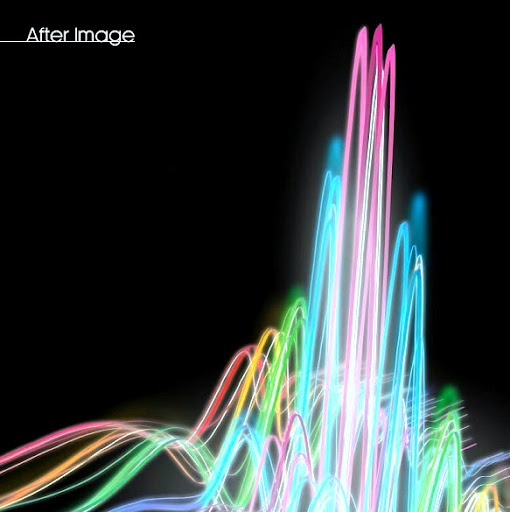Jing Zhang
age ~52
from Pacific Grove, CA
- Also known as:
-
- Jingyun Zhang
- Jin G Zhang
Jing Zhang Phones & Addresses
- Pacific Grove, CA
- 499 Drake Ave, Monterey, CA 93940
- Pittsburg, CA
- Salinas, CA
- Las Cruces, NM
Us Patents
-
Method For Forming A Hard Bias Structure In A Magnetoresistive Sensor
view source -
US Patent:7284316, Oct 23, 2007
-
Filed:Nov 17, 2004
-
Appl. No.:10/991712
-
Inventors:Yiming Huai - Pleasanton CA, US
Jinqiu Zhang - Fremont CA, US
Jing Zhang - San Jose CA, US -
Assignee:Western Digital (Fremont), LLC - Lake Forest CA
-
International Classification:G11B 5/127
H04R 31/00 -
US Classification:2960316, 2960308, 2960313, 2960315, 2960318, 216 62, 216 65, 216 66, 36032411, 36032412, 427127, 427128, 451 5, 451 41
-
Abstract:A method for forming a hard bias structure in a magnetoresistive sensor is disclosed. A magnetoresistive sensor having a soft magnetic bias layer, spacer layer, and a magnetoresistive layer, is formed over a substrate having a gap layer. A mask is formed over a portion of the magnetoresistive sensor structure to define a central region. The masked structure is ion milled to remove portions not shielded by the mask, to form the central region with sloped sides, and to expose a region of the gap layer laterally adjacent the sloped sides. A first underlayer is deposited onto at least the sloped sides at a high deposition angle. A second underlayer is deposited to at least partially overlap the first underlayer, and at a first lower deposition angle. A hard bias layer is deposited over at least a portion of the second underlayer, and at a second lower deposition angle.
-
Spin-Transfer Torque Magnetic Random Access Memory With Perpendicular Magnetic Anisotropy Multilayers
view source -
US Patent:20120063218, Mar 15, 2012
-
Filed:Sep 2, 2011
-
Appl. No.:13/225338
-
Inventors:Yiming Huai - Pleasanton CA, US
Jing Zhang - Los Altos CA, US
Rajiv Yadav Ranjan - San Jose CA, US
Yuchen Zhou - San Jose CA, US
Roger Klas Malmhall - San Jose CA, US
Ioan Tudosa - Milpitas CA, US -
Assignee:Avalanche Technology, Inc. - Fremont CA
-
International Classification:G11C 11/14
H01L 29/82 -
US Classification:365171, 257421, 257E29323
-
Abstract:A spin-torque transfer memory random access memory (STTMRAM) element includes a composite fixed layer formed on top of a substrate and a tunnel layer formed upon the fixed layer and a composite free layer formed upon the tunnel barrier layer, the magnetization direction of each of the composite free layer and fixed layer being substantially perpendicular to the plane of the substrate. The composite layers are made of multiple repeats of a bi-layer unit which consists of a non-magnetic insulating layer and magnetic layer with thicknesses adjusted in a range that makes the magnetization have a preferred direction perpendicular to film plane.
-
Memory System Having Thermally Stable Perpendicular Magneto Tunnel Junction (Mtj) And A Method Of Manufacturing Same
view source -
US Patent:20120146167, Jun 14, 2012
-
Filed:Oct 19, 2011
-
Appl. No.:13/277187
-
Inventors:Yiming Huai - Pleasanton CA, US
Yuchen Zhou - San Jose CA, US
Jing Zhang - Los Altos CA, US
Roger Klas Malmhall - San Jose CA, US
Ioan Tudosa - Milpitas CA, US
Rajiv Yadav Ranjan - San Jose CA, US -
Assignee:Avalanche Technology - Fremont CA
-
International Classification:H01L 29/82
B05D 5/12 -
US Classification:257421, 427130, 257E29323
-
Abstract:A spin-torque transfer magnetic random access memory (STTMRAM) element employed to store a state based on the magnetic orientation of a free layer, the STTMRAM element is made of a first perpendicular free layer (PFL) including a first perpendicular enhancement layer (PEL). The first PFL is formed on top of a seed layer. The STTMRAM element further includes a barrier layer formed on top of the first PFL and a second perpendicular reference layer (PRL) that has a second PEL, the second PRL is formed on top of the barrier layer. The STTMRAM element further includes a capping layer that is formed on top of the second PRL.
-
Memory System Having Thermally Stable Perpendicular Magneto Tunnel Junction (Mtj) And A Method Of Manufacturing Same
view source -
US Patent:20130119498, May 16, 2013
-
Filed:Jan 9, 2013
-
Appl. No.:13/737897
-
Inventors:Yiming Huai - Pleasanton CA, US
Yuchen Zhou - San Jose CA, US
Jing Zhang - Los Altos CA, US
Roger Klas Malmhall - San Jose CA, US
Ioan Tudosa - Milpitas CA, US
Rajiv Yadav Ranjan - San Jose CA, US -
Assignee:Avalanche Technology, Inc. - Fremont CA
-
International Classification:H01L 43/02
-
US Classification:257421
-
Abstract:A spin-torque transfer magnetic random access memory (STTMRAM) element employed to store a state based on the magnetic orientation of a free layer, the STTMRAM element is made of a first perpendicular free layer (PFL) including a first perpendicular enhancement layer (PEL). The first PFL is formed on top of a seed layer. The STTMRAM element further includes a barrier layer formed on top of the first PFL and a second perpendicular reference layer (PRL) that has a second PEL, the second PRL is formed on top of the barrier layer. The STTMRAM element further includes a capping layer that is formed on top of the second PRL.
-
Magnetic Random Access Memory With Field Compensating Layer And Multi-Level Cell
view source -
US Patent:20130286723, Oct 31, 2013
-
Filed:Jun 26, 2013
-
Appl. No.:13/928263
-
Inventors:Yiming Huai - Pleasanton CA, US
Rajiv Yadav Ranjan - San Jose CA, US
Jing Zhang - Los Altos CA, US -
International Classification:G11C 11/16
H01L 43/02 -
US Classification:365158, 257421
-
Abstract:A spin toque transfer magnetic random access memory (STTMRAM) element comprises a reference layer, which can be a single layer structure or a synthetic multi-layer structure, formed on a substrate, with a fixed perpendicular magnetic component. A junction layer is formed on top of the reference layer and a free layer is formed on top of the junction layer with a perpendicular magnetic orientation, at substantially its center of the free layer and switchable. A spacer layer is formed on top of the free layer and a fixed layer is formed on top of the spacer layer, the fixed layer has a fixed perpendicular magnetic component opposite to that of the reference layer. The magnetic orientation of the free layer switches relative to that of the fixed layer. The perpendicular magnetic components of the fixed layer and the reference layer substantially cancel each other and the free layer has an in-plane edge magnetization field.
-
Mram Etching Processes
view source -
US Patent:20130337582, Dec 19, 2013
-
Filed:Jul 30, 2013
-
Appl. No.:13/954673
-
Inventors:Yiming Huai - Pleasanton CA, US
Jing Zhang - Los Altos CA, US
Yadav Ranjan - San Jose CA, US
Parviz Keshtbod - Los Altos Hills CA, US
Roger K. Malmhall - San Jose CA, US -
Assignee:Avalanche Technology Inc. - Fremont CA
-
International Classification:H01L 43/12
-
US Classification:438 3
-
Abstract:Various embodiments of the invention relate to etching processes used in fabrication of MTJ cells in an MRAM device. The various embodiments can be used in combination with each other. The first embodiment adds a hard mask buffer layer between a hard mask and a top electrode. The second embodiment uses a multilayered etching hard mask. The third embodiment uses a multilayered top electrode structure including a first Cu layer under a second layer such as Ta. The fourth embodiment is a two-phase etching process used for the bottom electrode to remove re-deposited material while maintaining a more vertical sidewall etching profile. In the first phase the bottom electrode layer is removed using carbonaceous reactive ion etching until the endpoint. In the second phase an inert gas and/or oxygen plasma is used to remove the polymer that was deposited during the previous etching processes.
-
Magnetic Random Access Memory With Switching Assist Layer
view source -
US Patent:20140027697, Jan 30, 2014
-
Filed:Jun 19, 2013
-
Appl. No.:13/921481
-
Inventors:Yiming Huai - Pleasanton CA, US
Jing Zhang - Los Altos CA, US
Rajiv Yadav Ranjan - San Jose CA, US
Roger Klas Malmhall - San Jose CA, US -
International Classification:H01L 43/02
-
US Classification:257 1
-
Abstract:A STTMRAM element includes a magnetization layer made of a first free layer and a second free layer, separated by a non-magnetic separation layer (NMSL), with the first and second free layers each having in-plane magnetizations that act on each other through anti-parallel coupling. The direction of the magnetization of the first and second free layers each is in-plane prior to the application of electrical current to the STTMRAM element and thereafter, the direction of magnetization of the second free layer becomes substantially titled out-of-plane and the direction of magnetization of the first free layer switches. Upon electrical current being discontinued to the STTMRAM element, the direction of magnetization of the second free layer remains in a direction that is substantially opposite to that of the first free layer.
-
Mtj Mram With Stud Patterning
view source -
US Patent:20140042567, Feb 13, 2014
-
Filed:Aug 10, 2012
-
Appl. No.:13/572197
-
Inventors:Dong Ha Jung - Pleasanton CA, US
Kimihiro Satoh - Beaverton OR, US
Jing Zhang - Los Altos CA, US
Yuchen Zhou - San Jose CA, US
Yiming Huai - Pleasanton CA, US -
International Classification:H01L 43/12
H01L 43/02 -
US Classification:257421, 438 3, 257E43001, 257E43006
-
Abstract:Use of a multilayer etching mask that includes a stud mask and a removable spacer sleeve for MTJ etching to form a bottom electrode that is wider than the rest of the MTJ pillar is described. The first embodiment of the invention described includes a top electrode and a stud mask. In the second and third embodiments the stud mask is a conductive material and also serves as the top electrode. In embodiments after the stud mask is formed a spacer sleeve is formed around it to initially increase the masking width for a phase of etching. The spacer is removed for further etching, to create step structures that are progressively transferred down into the layers forming the MTJ pillar. In one embodiment the spacer sleeve is formed by net polymer deposition during an etching phase.
Isbn (Books And Publications)

Ren Min Bi Jun Heng Hui Lu Yu Zhongguo Wai Mao: Equilibrium Exchange Rate of RMB and the Foreign Trade of China
view sourceAuthor
Jing Zhang
ISBN #
7040178052
Name / Title
Company / Classification
Phones & Addresses
Vesta Holdings Group
Holding Companies
Holding Companies
4264 Victory St, Burnaby, BC V5J1P7
6044308091, 6044308091
6044308091, 6044308091
Senior Credit Officer
Moodys KMV Co
Credit Reporting Services
Credit Reporting Services
405 Howard St Ste 300, Walnut Creek, CA 94597
Manager
Sen's Spa LLC
Manager
Yinong LLC
SINO-OCEAN SHIPPING AGENCY AMERICA, LTD
SAIGO LLC
Vesta Holdings Group
Holding Companies
Holding Companies
6044308091, 6044308091
OXFORD INTERNATIONAL EDUCATION GROUP, LTD
Medicine Doctors

Jing J. Zhang
view sourceSpecialties:
Family Medicine
Work:
Waverly Primary Care
600 New Waverly Pl STE 203, Cary, NC 27518
9198595650 (phone), 9198595695 (fax)
600 New Waverly Pl STE 203, Cary, NC 27518
9198595650 (phone), 9198595695 (fax)
Education:
Medical School
Tongji Med Univ, Wuhan City, Hubei, China
Graduated: 1986
Tongji Med Univ, Wuhan City, Hubei, China
Graduated: 1986
Procedures:
Allergen Immunotherapy
Allergy Testing
Arthrocentesis
Cardiac Stress Test
Continuous EKG
Destruction of Benign/Premalignant Skin Lesions
Electrocardiogram (EKG or ECG)
Pulmonary Function Tests
Skin Tags Removal
Vaccine Administration
Allergy Testing
Arthrocentesis
Cardiac Stress Test
Continuous EKG
Destruction of Benign/Premalignant Skin Lesions
Electrocardiogram (EKG or ECG)
Pulmonary Function Tests
Skin Tags Removal
Vaccine Administration
Conditions:
Abnormal Vaginal Bleeding
Acne
Acute Bronchitis
Acute Sinusitis
Acute Upper Respiratory Tract Infections
Acne
Acute Bronchitis
Acute Sinusitis
Acute Upper Respiratory Tract Infections
Languages:
Chinese
English
English
Description:
Dr. Zhang graduated from the Tongji Med Univ, Wuhan City, Hubei, China in 1986. She works in Cary, NC and specializes in Family Medicine.

Jing Xing Zhang
view sourceSpecialties:
Dermatology
Resumes

Jing Zhang Charlotte, NC
view sourceWork:
Wells Fargo
Nov 2013 to 2000
Statistical Modeler Randstad
Charlotte, NC
Feb 2013 to Jul 2013
Data Analyst/Scientist TMC
Charlotte, NC
Jul 2011 to Dec 2012
Data Analyst Internet Marketer and Asset Management
Nov 2005 to Jun 2011
Internet Market and Asset Management Primerica Financial
Fremont, CA
Mar 2003 to Dec 2005
Personal Financial & Investment Advisor Providian Financial/Washington Mutual Bank
San Francisco, CA
Feb 1998 to Nov 2005
Statistical Modeler Wells Fargo
San Francisco, CA
Dec 1997 to Mar 1998
Trilogy SAS Programmer Consultant Household International
Salinas, CA
Sep 1997 to Dec 1997
SAS Programmer Wells Fargo
Des Moines, IA
Oct 1996 to Sep 1997
Statistical Modeler
Nov 2013 to 2000
Statistical Modeler Randstad
Charlotte, NC
Feb 2013 to Jul 2013
Data Analyst/Scientist TMC
Charlotte, NC
Jul 2011 to Dec 2012
Data Analyst Internet Marketer and Asset Management
Nov 2005 to Jun 2011
Internet Market and Asset Management Primerica Financial
Fremont, CA
Mar 2003 to Dec 2005
Personal Financial & Investment Advisor Providian Financial/Washington Mutual Bank
San Francisco, CA
Feb 1998 to Nov 2005
Statistical Modeler Wells Fargo
San Francisco, CA
Dec 1997 to Mar 1998
Trilogy SAS Programmer Consultant Household International
Salinas, CA
Sep 1997 to Dec 1997
SAS Programmer Wells Fargo
Des Moines, IA
Oct 1996 to Sep 1997
Statistical Modeler
Education:
Iowa State University
Ames, IA
May 1997
M. S. in Statistics
Ames, IA
May 1997
M. S. in Statistics

Jing Zhang Portland, OR
view sourceWork:
Robert L. Stacy, CPA, LLC
Portland, OR
2008 to 2011
Accountant Krohn and Croak, CPAs
San Francisco, CA
2006 to 2007
Staff Accountant Louie & Wong LLP
San Francisco, CA
2005 to 2006
Intern Crossroad Services Inc
San Leandro, CA
2003 to 2004
Intern
Portland, OR
2008 to 2011
Accountant Krohn and Croak, CPAs
San Francisco, CA
2006 to 2007
Staff Accountant Louie & Wong LLP
San Francisco, CA
2005 to 2006
Intern Crossroad Services Inc
San Leandro, CA
2003 to 2004
Intern
Education:
California State University
2003 to 2005
Master of Business Administration in Finance Golden Gate University
Research and Decision Making
2003 to 2005
Master of Business Administration in Finance Golden Gate University
Research and Decision Making
Lawyers & Attorneys

Jing Zhang - Lawyer
view sourceAddress:
Freshfields Bruckhaus Deringer LLP
2074273834 (Office)
2074273834 (Office)
Licenses:
New York - Currently registered 2012
Education:
Ucla School of Law

Jing Zhang - Lawyer
view sourceLicenses:
New York - Due to reregister within 30 days of birthday 2011
Education:
Chicago Kent College of Law
Myspace

Jing Zhang
view sourceLocality:
Rotterdam (Thats in Holland), Zuid-Holland
Gender:
Female
Birthday:
1945
Googleplus

Jing Zhang
Work:
Interdigital Communications - Algorithms (2011-2012)
Education:
Drexel University - Computer Engineering

Jing Zhang
Education:
Tongji University - CDHAW, Shanghai No. 3 girls' high school, Hochschule Ostfalia für angewandte Wissenschaft - Fahrzeugtechnik

Jing Zhang
Work:
University of Rochester - Student (2012)
Tagline:
Terahertz

Jing Zhang
Work:
HSBC Private Bank - Manager (2006)
Education:
Tongji University - Software

Jing Zhang
Work:
Mozilla Corporation
Education:
Tsinghua University - Computer Science

Jing Zhang
Education:
UMN - Biostatistics
Tagline:
Love this world although it sucks sometimes

Jing Zhang
Education:
Deakin University

Jing Zhang
Education:
University of Southern California
Plaxo

Jing Zhang
view source
Zhang Jing
view sourceSony Ericsson

Jing Zhang
view sourceMarriott Vacation Club International

Jing Zhang
view sourceHMS
Flickr

Jing Feng Zhang
view source
Jing Dong Zhang
view source
Jing Stella Zhang
view source
Jing Cheng Zhang
view source
Jing Rachel Zhang
view source
Jing Jing Zhang
view source
Jing Jean Zhang
view source
Jing Marina Zhang
view sourceClassmates

Jing Zhang
view sourceSchools:
Puguang High School Shanghai China 1986-1990
Community:
Wang Yan, Bao Xudong, Peidong Zong, Dong Dang, Gout Lamont, Zhou Fage

Jing Zhang
view sourceSchools:
Shanghai American School Shanghai China 1981-1984
Community:
David Giedt, Glenda Case, Raazia Bokhari, Eugene Wu

Jing Zhang
view sourceSchools:
Charleston High School Charleston IL 2009-2013

Jing Jing Zhang
view sourceSchools:
Ridgewood Junior High School 93 Ridgewood NY 1998-2002
Community:
John Tuomi

Jing Tsui (Zhang)
view sourceSchools:
Jinan University Guangzhou China 1980-1984

Jing Zhang
view sourceSchools:
Dalian No. 8 High School Dalian China 1986-1989
Community:
Rocky Medina

Jing Zhang
view sourceSchools:
Beijing Bayi High School Beijing China 2000-2004
Community:
Richard Capps

Jing Zhang
view sourceSchools:
Beijing Bayi High School Beijing China 2000-2004
Community:
Richard Capps
News

Dreams Dull the Distress of Emotional Memories
view source- Lead author Jing Zhang, who earned a Ph.D. in cognitive sciences at UC Irvine in 2023 and is now a postdoctoral research fellow at Harvard Medical School, added, Our work provides the first empirical support for dreamings active involvement in sleep-dependent emotional memory processing, suggestin
- Date: May 14, 2024
- Category: Health
- Source: Google
Youtube
Get Report for Jing Zhang from Pacific Grove, CA, age ~52













![[Jing Zhang] - MV [Jing Zhang] - MV](https://i.ytimg.com/vi/tR4eC2e0IoE/0.jpg)
![[Jing Zhang] - [Jing Zhang] -](https://i.ytimg.com/vi/Gvy_pCKm1Uw/0.jpg)

![City Under Siege new Trailer 2010 [HD] () City Under Siege new Trailer 2010 [HD] ()](https://i.ytimg.com/vi/oQY5YdKzh4g/0.jpg)

